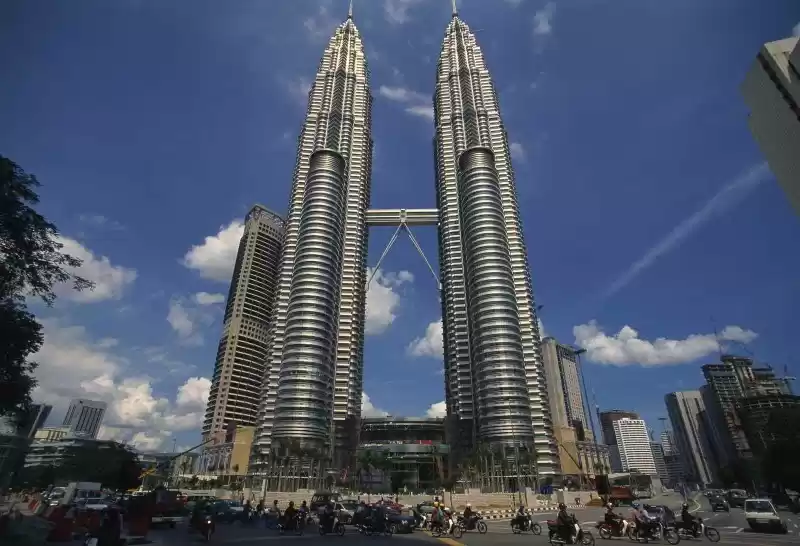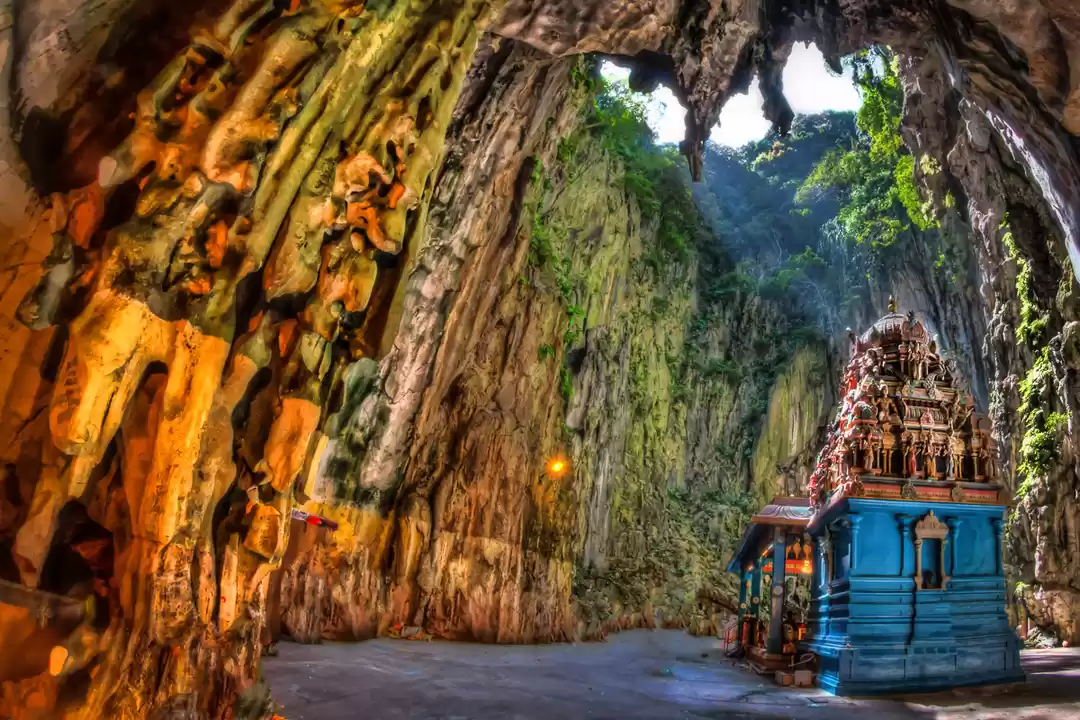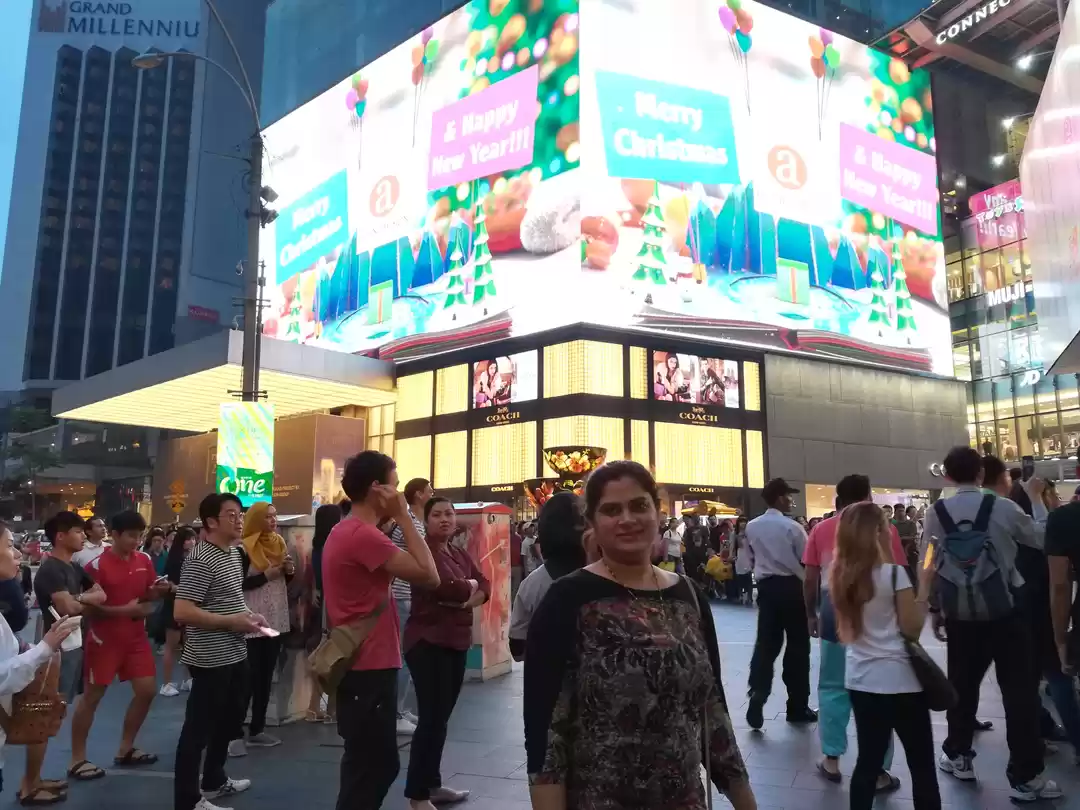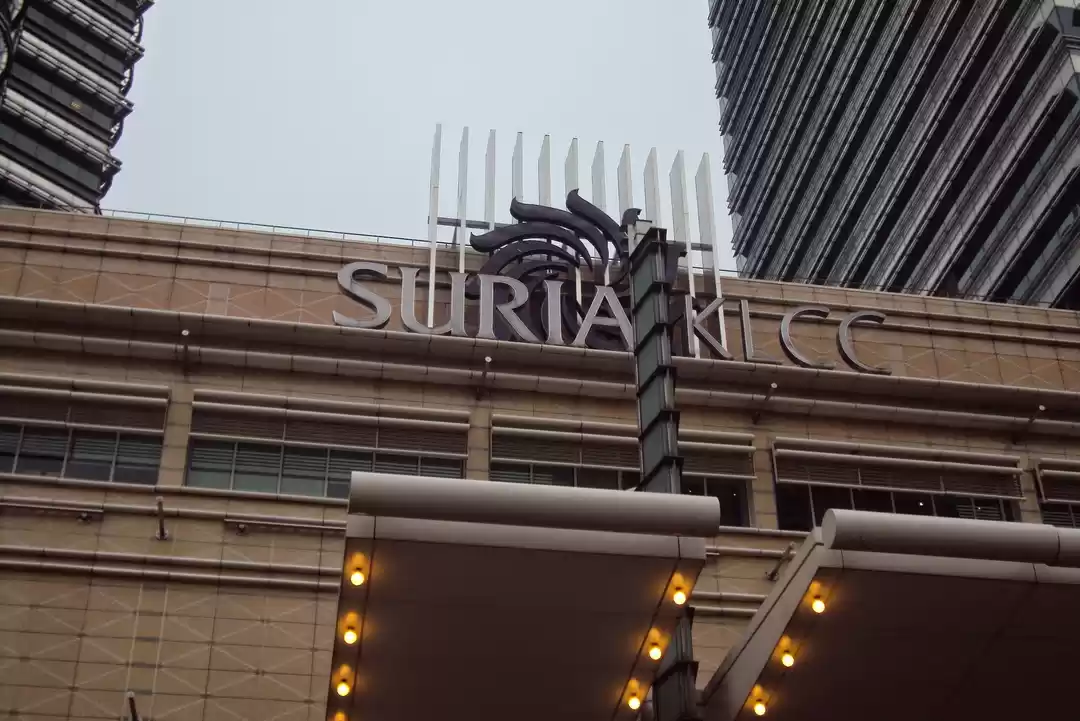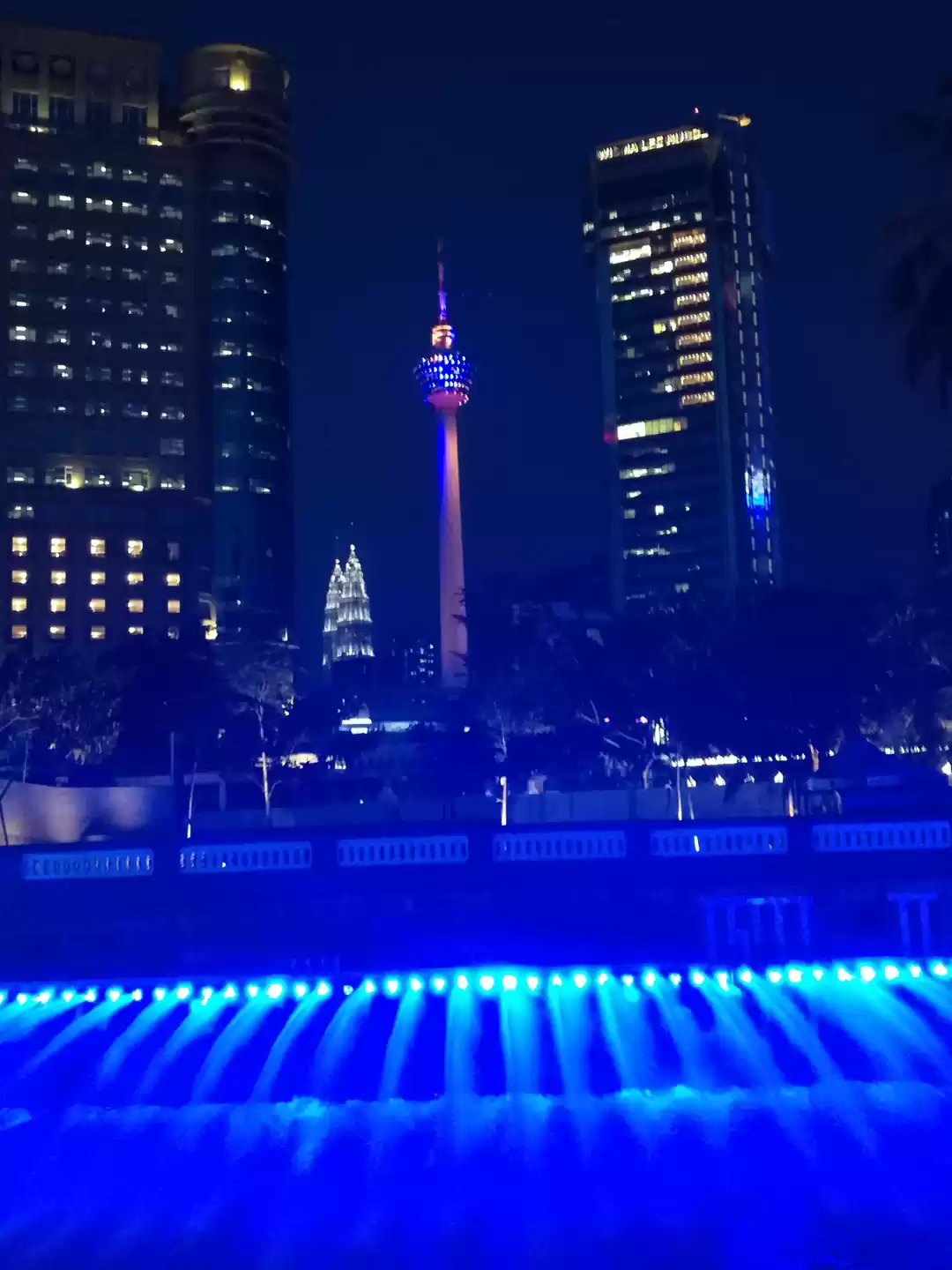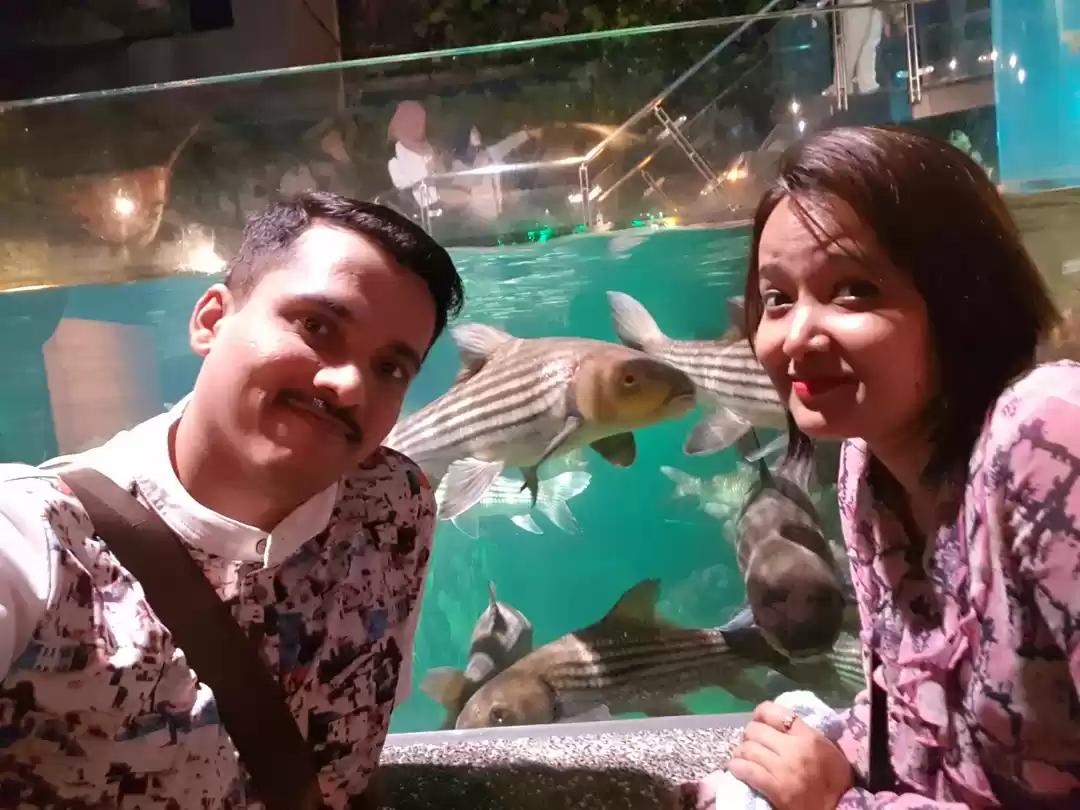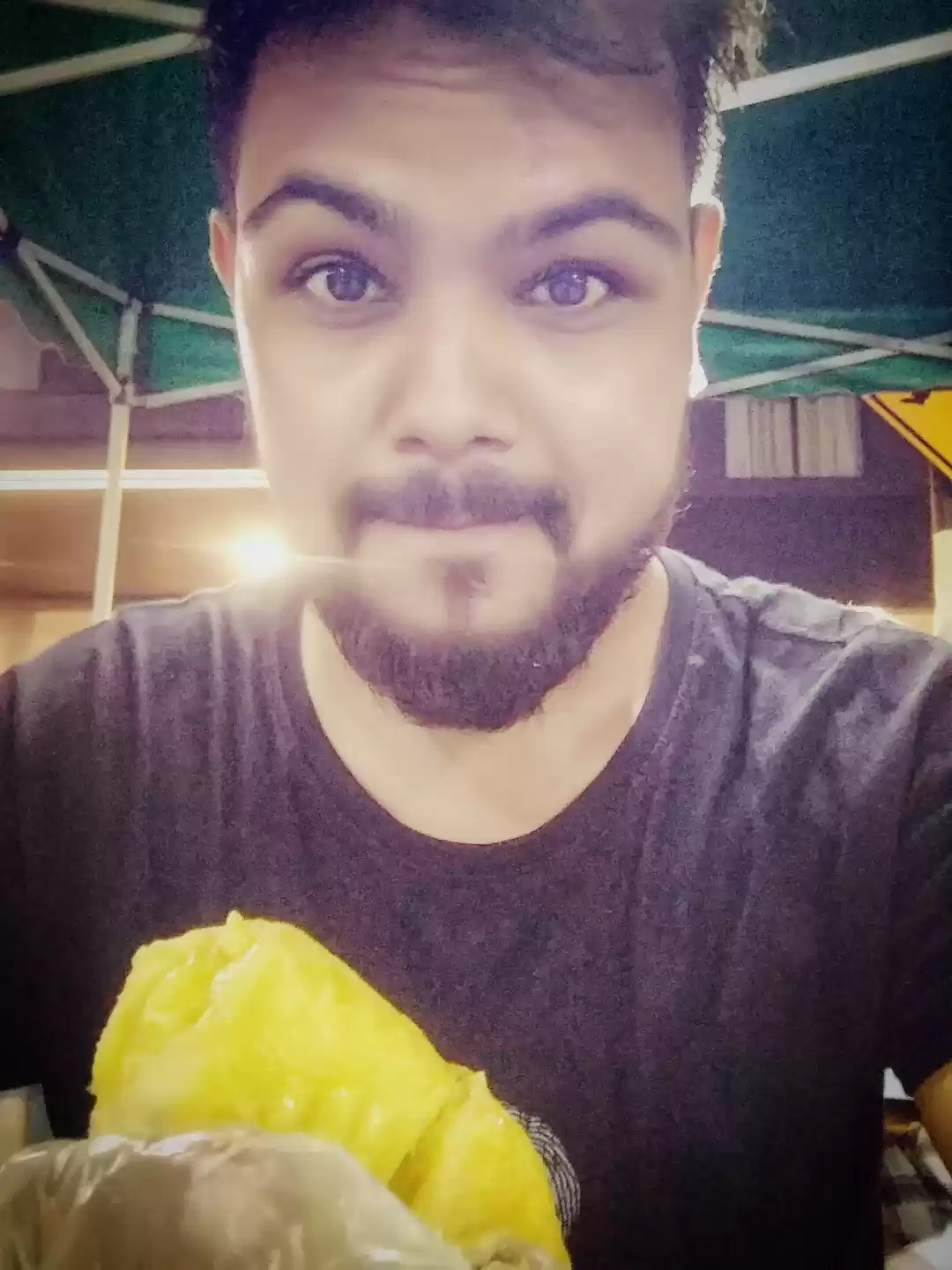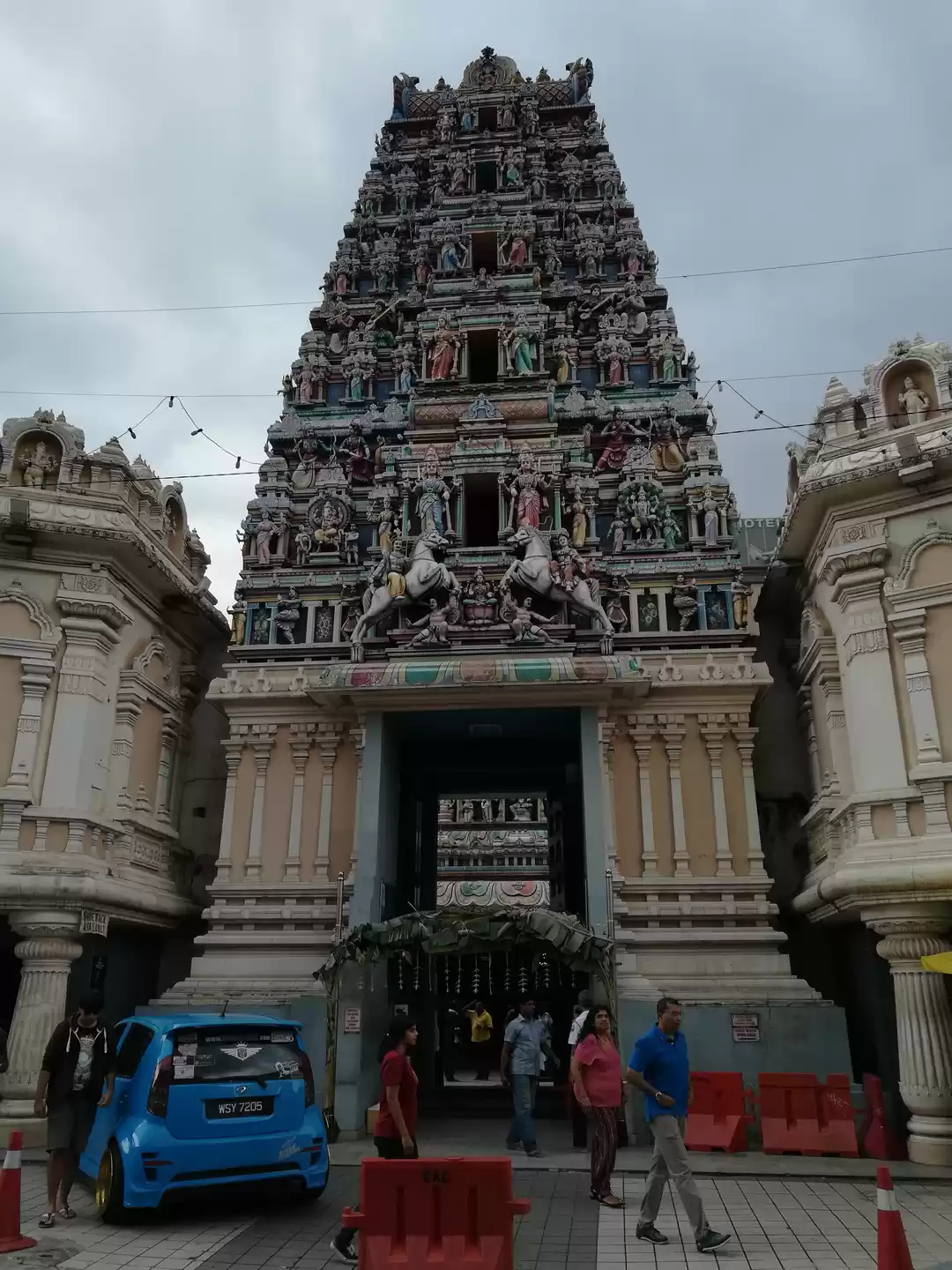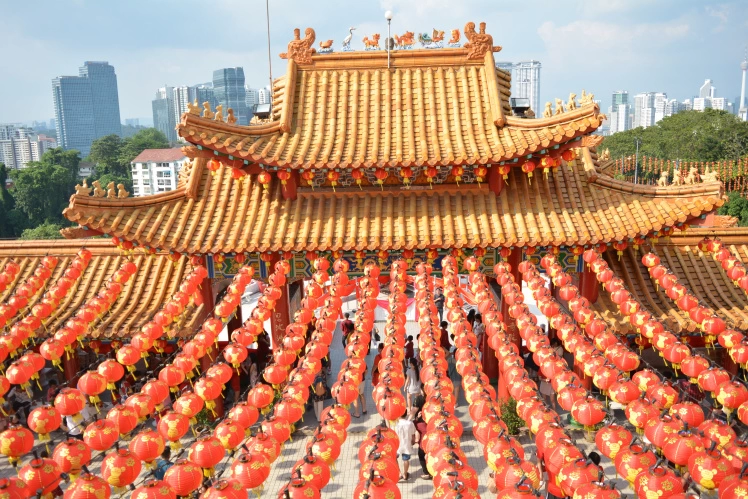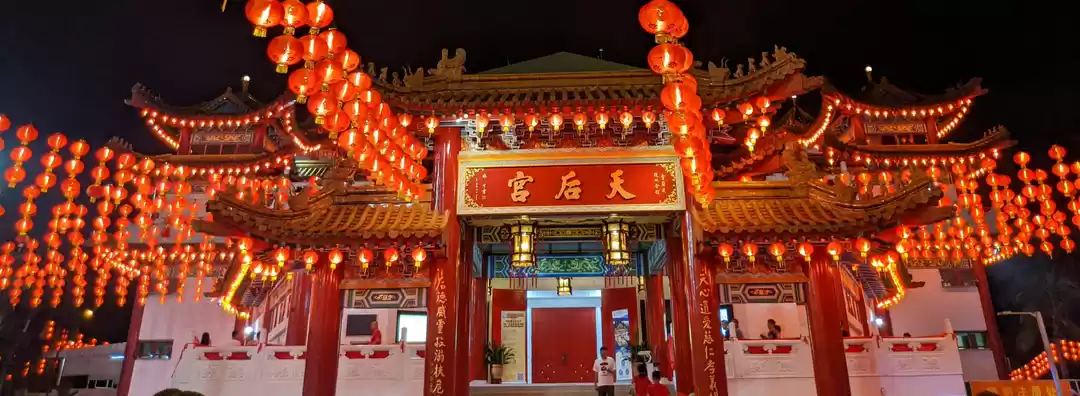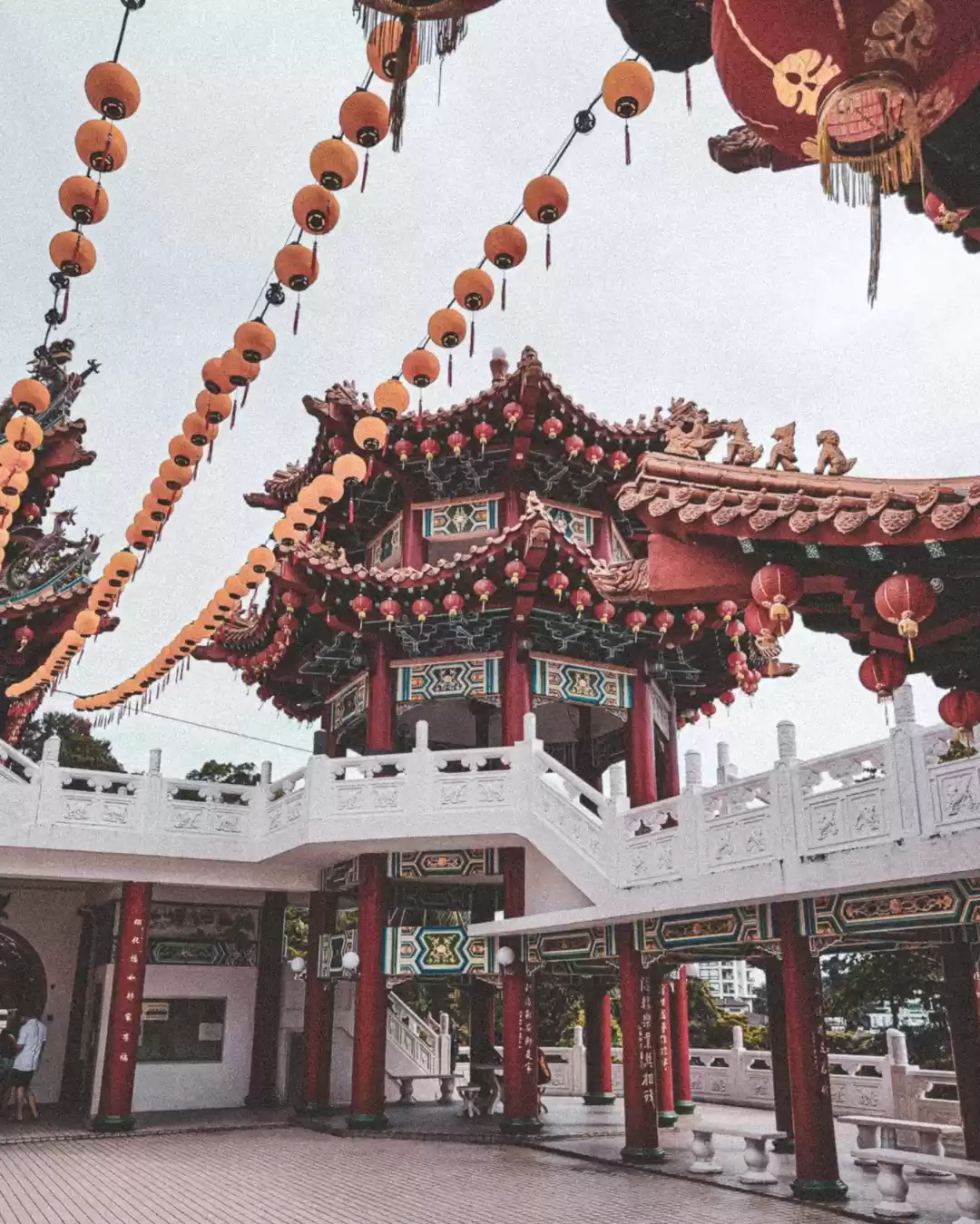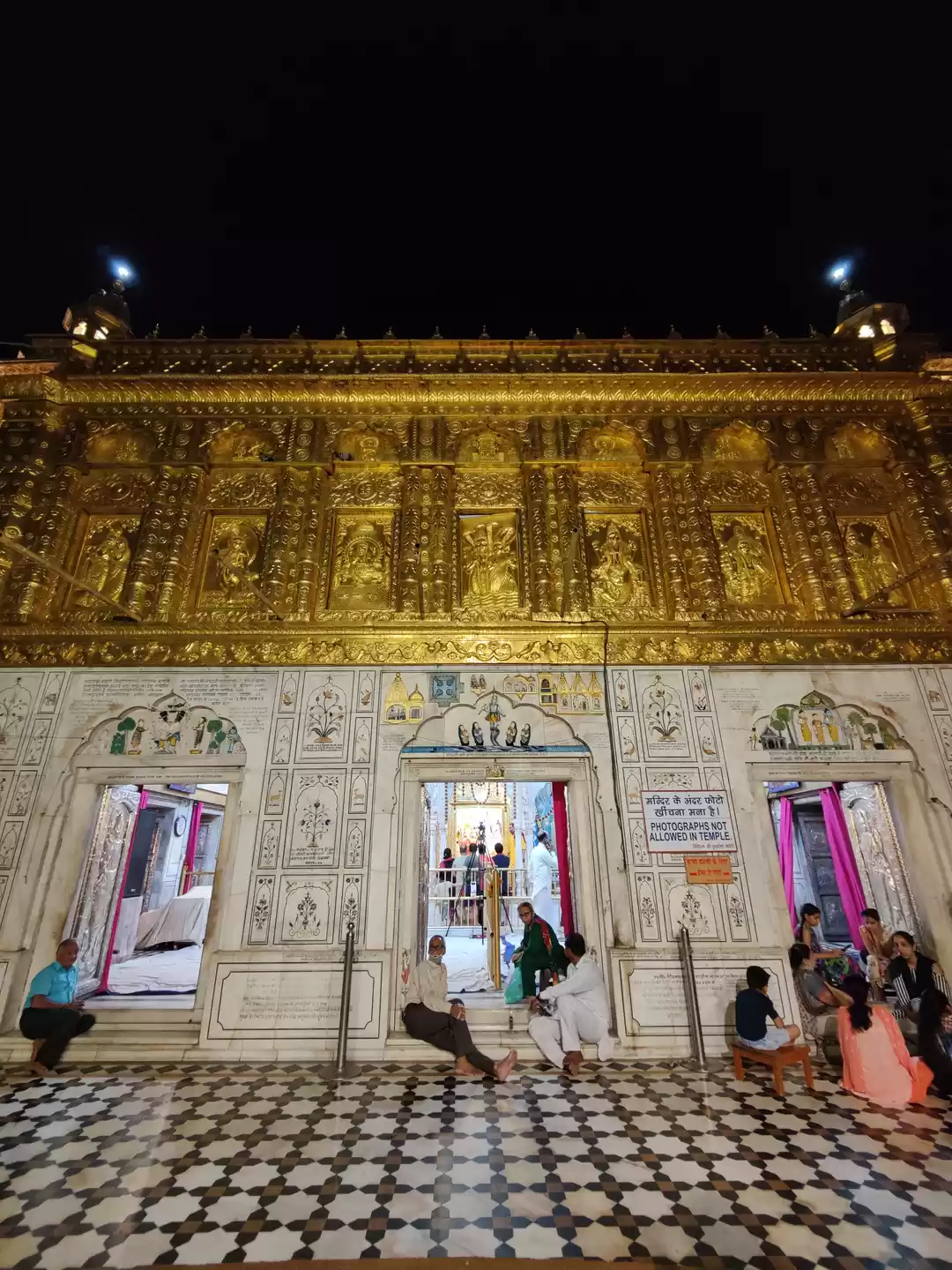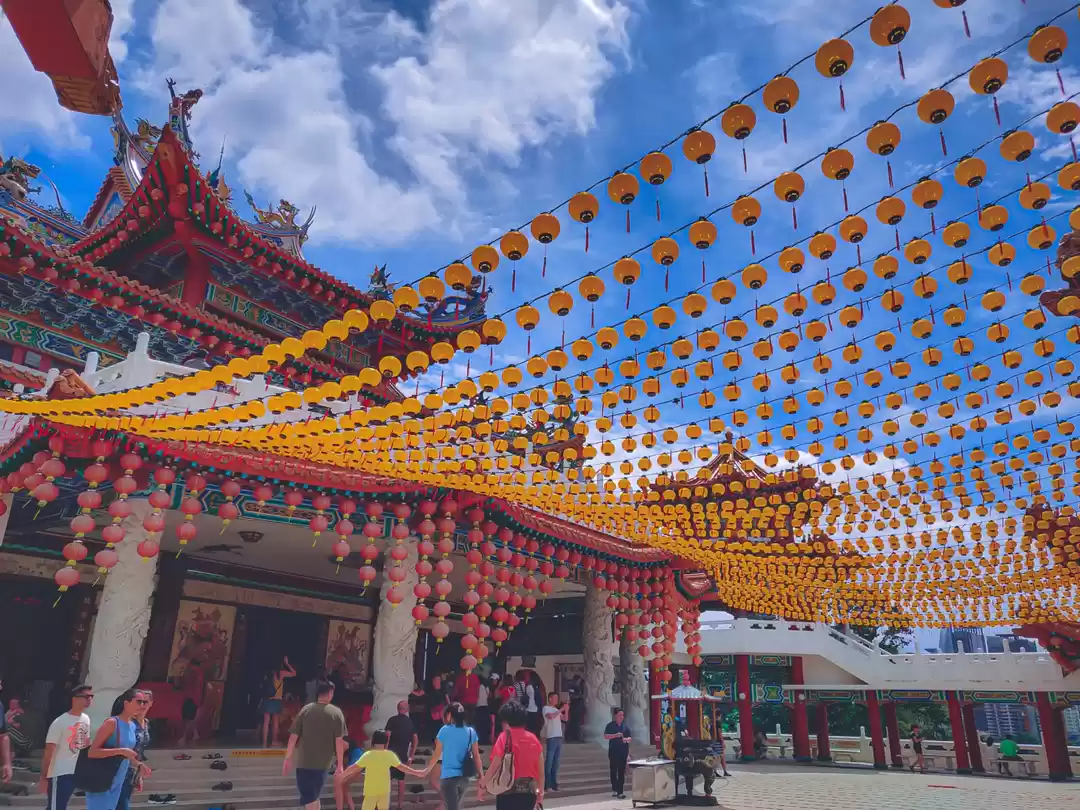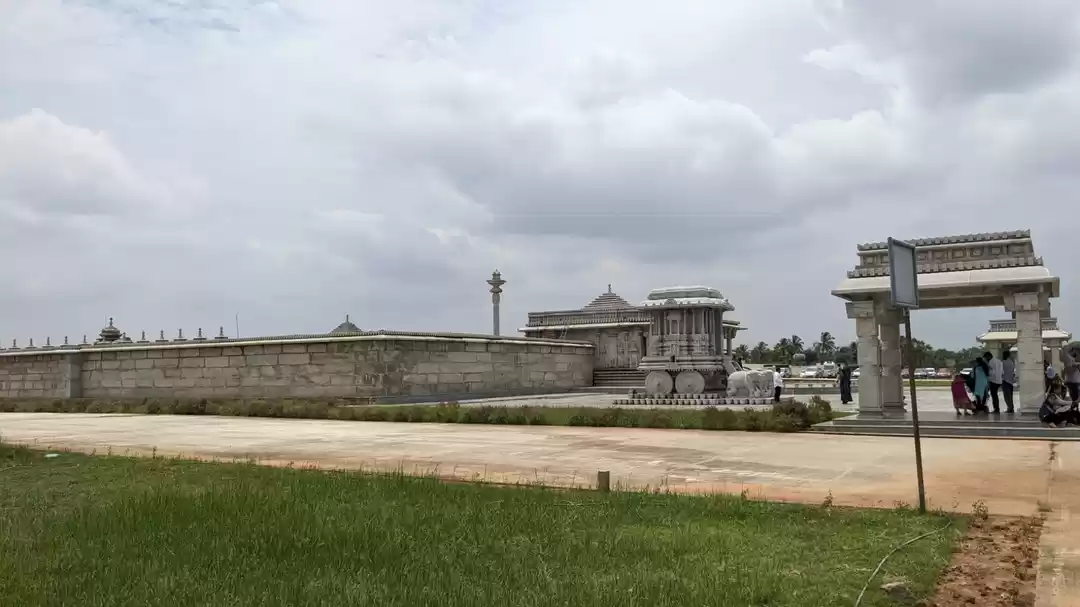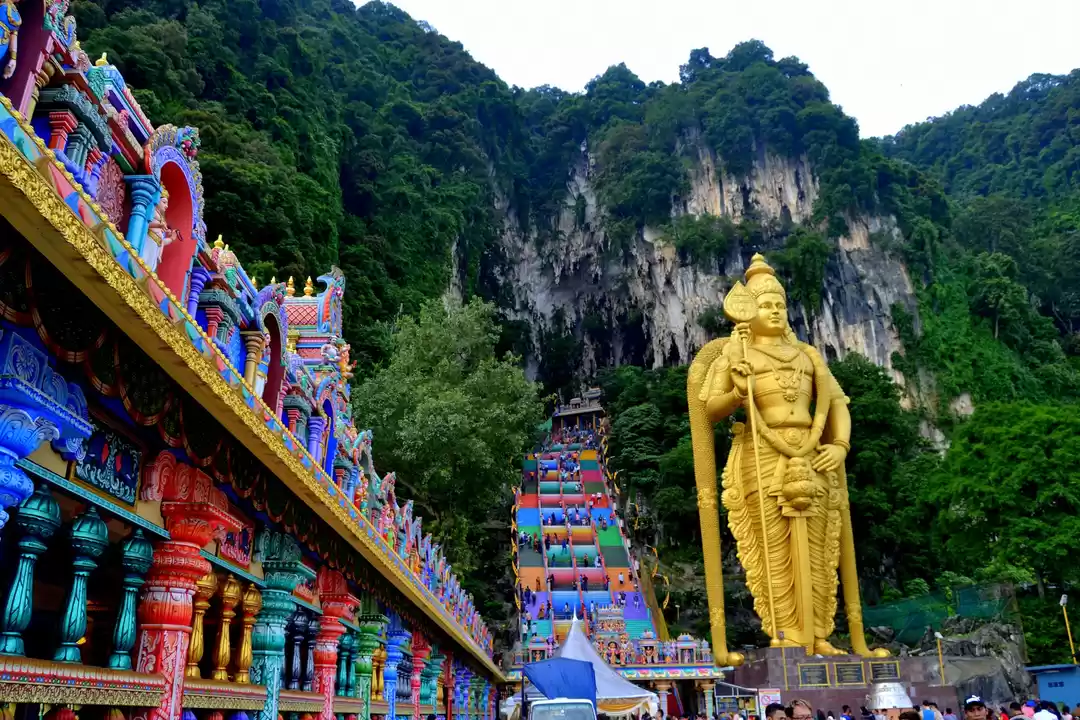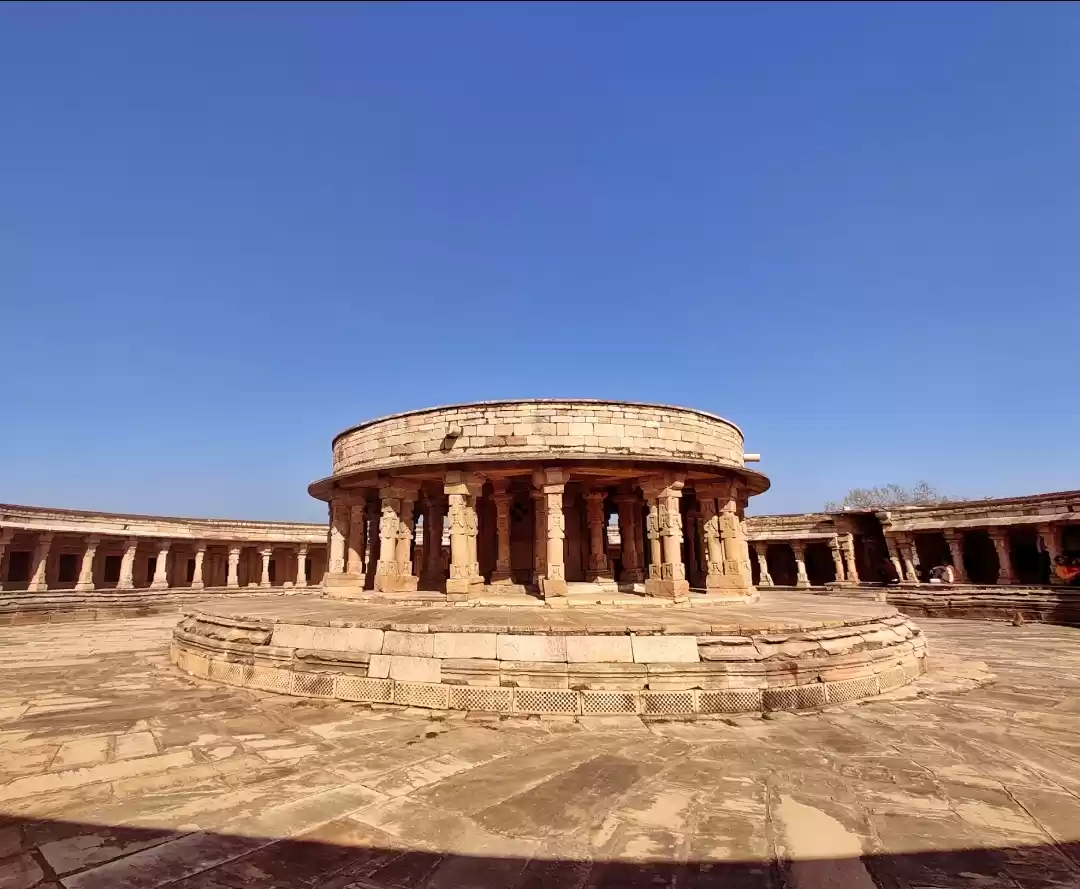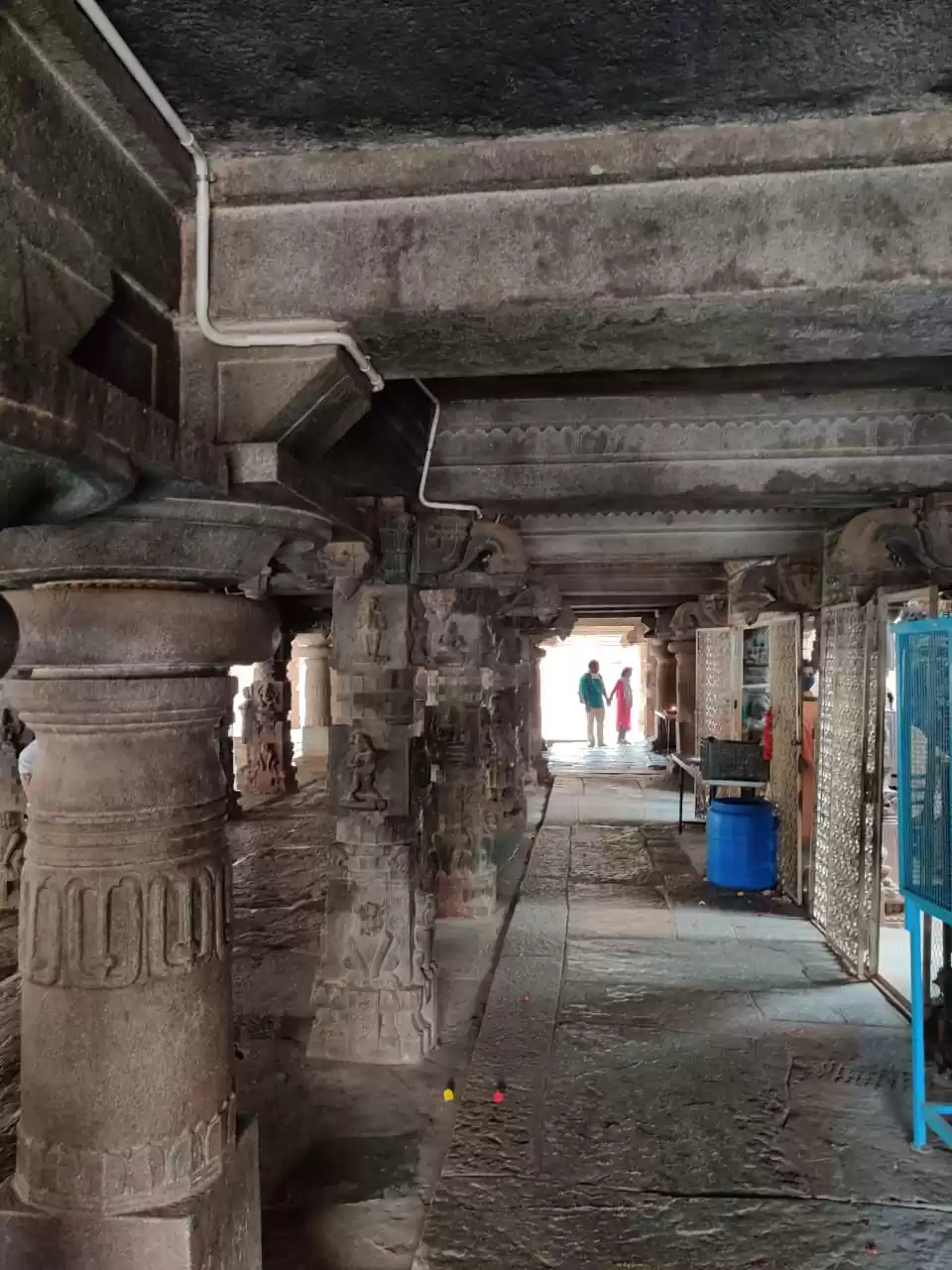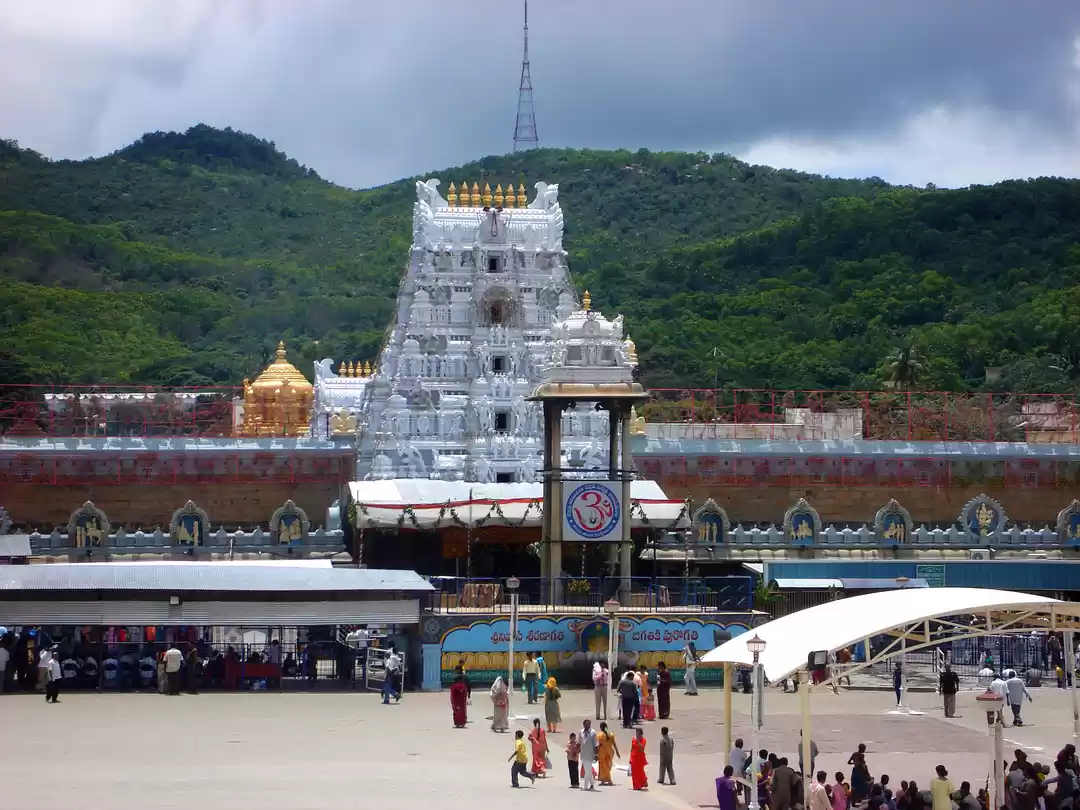Imagine a temple that combines the beauty of Chinese, Malay, and Indian cultures, and offers a panoramic view of the city skyline. A temple that is not only a place of worship, but also a venue for weddings, festivals, and fortune-telling. A temple that is free to enter, and easy to reach by public transport. Sounds too good to be true, right?
Well, such a temple exists in Kuala Lumpur, Malaysia, and it is called the Thean Hou Temple. The Thean Hou Temple is one of the largest and most impressive temples in Southeast Asia, and a must-see attraction for anyone visiting Kuala Lumpur. Whether you are interested in religion, architecture, or culture, you will find something to admire and enjoy at the Thean Hou Temple.
In this article, we will tell you everything you need to know about the Thean Hou Temple, such as its history, architecture, location, timings, entrance fee, dress code, and other attractions nearby. We will also give you some tips and tricks to make the most of your visit, and some recommendations on where to stay in Kuala Lumpur. By the end of this article, you will be ready to plan your trip to the Thean Hou Temple, and experience its beauty and charm for yourself.
History and Architecture of the Thean Hou Temple
The Thean Hou Temple was built in 1989 by the Hainanese community in Kuala Lumpur, who wanted to honor the Goddess of the Sea, Thean Hou (also known as Mazu or Tianhou). The temple is also dedicated to the Goddess of Mercy, Guanyin, and the Goddess of the Waterfront, Shuiwei Shengniang. The temple is a symbol of the Hainanese culture and heritage, as well as a tribute to the female deities who protect the fishermen and sailors.

The architecture of the temple is a blend of traditional and modern styles, and reflects the influences of the Chinese, Malay, and Indian communities in Malaysia. The temple has six tiers, and covers an area of 1.67 acres. The main features of the temple are:
The pagoda, which is inspired by the design of the Linggu Temple in Nanjing, China, and has 12 animal signs of the Chinese zodiac on its base.
The lanterns, which are hung all over the temple, and create a festive and colorful atmosphere. The lanterns are especially beautiful at night, when they light up the temple and the surrounding area.
The garden, which is a serene and tranquil spot, where you can relax and enjoy the nature. The garden has a fountain, a pond, a tortoise enclosure, and a statue of Guanyin.
The statues, which are scattered throughout the temple, and depict various deities, animals, and mythical creatures. Some of the statues are made of bronze, marble, or granite, and some are carved from wood or stone.
The murals, which are painted on the walls and ceilings of the temple, and illustrate the stories and legends of the deities and the Hainanese people. The murals are rich in detail and symbolism, and showcase the artistic skills of the temple’s craftsmen.
The Thean Hou Temple is not only a feast for the eyes, but also for the soul. The temple is a place of worship, where you can pray, make offerings, and receive blessings from the deities. You can also witness or participate in various ceremonies and rituals, such as weddings, birthdays, and festivals. The temple is also a place of fortune-telling, where you can consult the oracle, get your palm read, or draw a lotus stick. The temple is also a place of learning, where you can discover the history, culture, and beliefs of the Hainanese people, and the religions of Buddhism, Taoism, and Confucianism.
Best Time to Visit the Thean Hou Temple
The Thean Hou Temple is open daily from 8:00 am to 10:00 pm, and you can visit it anytime of the year. However, some times are better than others, depending on the weather, the festivals, and the crowds. Here are some factors to consider when planning your visit:
Weather:
Kuala Lumpur has a tropical climate, which means it is hot and humid all year round. The average temperature is around 28°C, and the average humidity is around 80%. The rainy season is from March to April, and from September to November, and the dry season is from May to August, and from December to February. The best time to visit the temple is during the dry season, when the weather is more pleasant and the chances of rain are lower. However, you should always be prepared for sudden showers, and bring an umbrella, a hat, and sunscreen.
Festivals:
The Thean Hou Temple is a popular venue for celebrating various festivals, such as Chinese New Year, Lantern Festival, Mid-Autumn Festival, Vesak Day, and Nine Emperor Gods Festival. These festivals are usually held in January, February, September, October, and November, respectively. During these festivals, the temple is decorated with flowers, lanterns, and banners, and hosts various activities and performances, such as lion dances, dragon dances, opera shows, and fireworks. These festivals are a great opportunity to experience the culture and the spirit of the temple, and to join the locals in their festivities. However, you should also expect large crowds, long queues, and loud noises, which may affect your enjoyment and comfort.
Crowds:
The Thean Hou Temple is a popular attraction for both locals and tourists, and it can get very busy and crowded, especially on weekends, holidays, and festivals. The peak hours are usually from 10:00 am to 12:00 pm, and from 4:00 pm to 6:00 pm, when the temple is most active and lively. If you want to avoid the crowds, you should visit the temple early in the morning, or late in the evening, when the temple is more quiet and peaceful. You should also avoid visiting the temple on Mondays, when it is closed for maintenance.
The time required to explore the temple depends on your interest and pace, but generally, you can cover the main attractions in about 2 hours. However, if you want to enjoy the temple at your leisure, or participate in some activities or events, you may want to spend more time there.
How to Get to the Thean Hou Temple
The Thean Hou Temple is located at 65, Persiaran Endah, Off Jalan Syed Putra, 50460 Kuala Lumpur, Malaysia. The coordinates of the temple are 3.1213° N, 101.6857° E. Here is a map to help you locate the temple.
There are different ways to get to the temple, such as taxi, public transport, or walking, and each has its pros and cons. Here are some options to consider:
Taxi:
Taking a taxi is the easiest and fastest way to get to the temple, as you can avoid the hassle of finding your way, and enjoy the comfort and convenience of a private vehicle. However, taking a taxi is also the most expensive way to get to the temple, as you have to pay for the fare, the tolls, and the tips. The fare depends on the distance, the traffic, and the time of the day, but generally, it ranges from RM 10 to RM 30, depending on your starting point. The tolls are usually RM 2 to RM 4, depending on the route. The tips are optional, but appreciated, and usually RM 1 to RM 2, depending on the service. You can hail a taxi on the street, or book one online, using apps such as Grab, MyCar, or MULA. You should always use a metered taxi, or agree on the price before you get in, to avoid being overcharged or scammed.
Public transport:
Taking public transport is the cheapest and most eco-friendly way to get to the temple, as you can save money and reduce your carbon footprint. However, taking public transport is also the most complicated and time-consuming way to get to the temple, as you have to navigate the system, transfer between modes, and walk some distance. The public transport system in Kuala Lumpur consists of trains, buses, and monorails, and you can use a single ticket or a prepaid card, such as Touch 'n Go, to pay for the fares. The fares depend on the distance and the mode, but generally, they range from RM 1 to RM 5, depending on your starting point. The nearest train station to the temple is the Bangsar LRT Station.
Public transport:
Taking public transport is the cheapest and most eco-friendly way to get to the temple, as you can save money and reduce your carbon footprint. However, taking public transport is also the most complicated and time-consuming way to get to the temple, as you have to navigate the system, transfer between modes, and walk some distance. The public transport system in Kuala Lumpur consists of trains, buses, and monorails, and you can use a single ticket or a prepaid card, such as Touch 'n Go, to pay for the fares. The fares depend on the distance and the mode, but generally, they range from RM 1 to RM 5, depending on your starting point. The nearest train station to the temple is the Bangsar LRT Station, which is on the Kelana Jaya Line. From there, you can take a bus, such as the RapidKL Bus No. U84, U85, U87, or T631, and get off at the Jalan Syed Putra stop, which is about 10 minutes away from the temple. Alternatively, you can take a monorail, such as the KL Monorail, and get off at the Tun Sambanthan Station, which is on the Sri Petaling Line. From there, you can take a taxi, or walk for about 20 minutes to the temple. You can find more information and resources about the public transport in Kuala Lumpur, such as maps, schedules, and routes, on the following websites:
Walking:
Walking is the most adventurous and healthy way to get to the temple, as you can explore the city, enjoy the scenery, and exercise your body. However, walking is also the most challenging and exhausting way to get to the temple, as you have to deal with the heat, the humidity, and the traffic. The distance and the time to walk to the temple depend on your starting point, but generally, they range from 2 km to 5 km, and from 30 minutes to 60 minutes, respectively. You can use apps such as Google Maps, Waze, or Maps.me to find the best walking route to the temple, and to get directions and updates along the way. You should always wear comfortable shoes, carry a bottle of water, and follow the pedestrian signs and signals, to ensure a safe and enjoyable walk.
What to Wear at the Thean Hou Temple
The Thean Hou Temple is a sacred and respectful place, and you should dress accordingly when you visit it. Here are some guidelines and suggestions on what to wear at the temple:
Dress code:
The temple does not have a strict dress code, but you should dress modestly and decently, and avoid revealing or offensive clothing, such as shorts, skirts, tank tops, sleeveless shirts, low-cut tops, etc. You should also avoid wearing clothes that have religious or political symbols, slogans, or images, as they may be considered disrespectful or inappropriate. You should also remove your shoes, hats, and sunglasses, before entering the temple, and store them in the designated areas or lockers.
Modesty:
The temple provides free sarongs and scarves for visitors who need to cover up their legs, arms, or shoulders, before entering the temple. You can borrow them from the counter at the entrance, and return them after your visit. You should also respect the customs and traditions of the temple, and refrain from touching, hugging, or kissing, inside the temple, as they may be seen as disrespectful or inappropriate.
Comfort:
The temple is hot and humid, especially during the day, and you should wear light and breathable clothing, such as cotton, linen, or silk, to keep yourself cool and comfortable. You should also wear sunscreen, a hat, and sunglasses, to protect yourself from the sun, and carry a fan, a towel, or a wet wipe, to refresh yourself. You should also wear comfortable and sturdy shoes, such as sneakers, sandals, or flats, to walk around the temple, and avoid heels, boots, or flip-flops, as they may be uncomfortable or unsafe.
Entrance Fee for the Thean Hou Temple
The best part about visiting the Thean Hou Temple is that it is free to enter, and you can enjoy all its attractions and activities without paying anything. However, there is a parking fee for vehicles, which you have to pay if you drive to the temple, or take a taxi. The parking fee is RM 2 per hour, or RM 6 per day, and you can pay by cash, card, or app. You can also find some free parking spots along the road, but they are limited and may be occupied.
There are some other costs that you may incur at the temple, such as donations, souvenirs, food, and fortune-telling. These are optional, but you may want to support the temple and its services, or buy some memorabilia or snacks, or try your luck with the oracle. The donations are voluntary, and you can give as much or as little as you want, depending on your budget and your faith. The souvenirs are sold at the gift shop, and they include items such as keychains, magnets, postcards, books, etc. The food is sold at the cafeteria, and it includes dishes such as noodles, rice, dumplings, etc. The fortune-telling is offered at the temple, and it includes methods such as palm reading, lotus stick drawing, or oracle consultation. The prices of these services vary, but they are usually affordable and reasonable.
Other Attractions and Things to Do in Kuala Lumpur
The Thean Hou Temple is not the only attraction in Kuala Lumpur, and you may want to explore some other places and activities in the city, especially if you have more time and energy. Kuala Lumpur is a vibrant and diverse city, and it offers something for everyone, whether you are into culture, nature, or entertainment. Here are some of the other attractions and things to do in Kuala Lumpur, that you may want to check out:

Batu Caves:
The Batu Caves are a series of limestone caves and temples, located about 13 km north of Kuala Lumpur. They are one of the most popular and sacred Hindu sites in Malaysia, and they attract thousands of pilgrims and tourists every year. The main attraction of the Batu Caves is the Lord Murugan Statue, which is the tallest statue of a Hindu deity in the world, standing at 42.7 meters high. To reach the statue and the main temple, you have to climb 272 steps, which can be challenging, but rewarding. Along the way, you can see and feed the monkeys, who live in the caves, but be careful, as they can be aggressive and steal your belongings. The Batu Caves are open daily from 6:00 am to 9:00 pm, and the entrance is free. However, you have to pay RM 5 to enter the Dark Cave, which is a conservation site, where you can see various wildlife, such as bats, spiders, and snakes. You can also pay RM 15 to enter the Cave Villa, which is a cultural site, where you can see various statues, paintings, and exhibits, related to Hinduism. You can get to the Batu Caves by train, bus, or taxi, and the journey takes about 30 minutes to an hour, depending on the mode and the traffic. You can find more information and resources about the Batu Caves, such as maps, schedules, and routes, on the following website:

Sri Mahamariamman Temple:
The Sri Mahamariamman Temple is the oldest and richest Hindu temple in Kuala Lumpur, and it is located in the heart of Chinatown. It was built in 1873 by the Tamil community, who wanted to worship the Goddess of Rain, Sri Mahamariamman. The temple is also dedicated to the Lord Ganesha, the Lord Murugan, and the Lord Shiva. The temple is a masterpiece of architecture and art, and it features a gopuram, which is a tower with intricate carvings of gods and goddesses, a garbhagriha, which is a sanctum with a silver chariot, and a mandapam, which is a hall with colorful paintings and sculptures. The temple is a place of worship, where you can pray, make offerings, and receive blessings from the deities. The Sri Mahamariamman Temple is open daily from 6:00 am to 8:30 pm, and the entrance is free. However, you have to pay RM 2 to store your shoes, and RM 5 to take photos or videos. You can get to the Sri Mahamariamman Temple by train, bus, or taxi, and the journey takes about 15 minutes to 30 minutes, depending on your starting point.

Petronas Twin Towers:
The Petronas Twin Towers are the most iconic and recognizable landmarks in Kuala Lumpur, and they are the tallest twin towers in the world, standing at 451.9 meters high. They were built in 1998 by the Petronas company, which is the national oil and gas company of Malaysia, and they represent the aspirations and achievements of the nation. The towers are a marvel of engineering and design, and they feature a skybridge, which is a double-decker bridge that connects the two towers at the 41st and 42nd floors, and a skydeck, which is an observation deck that offers a stunning view of the city and beyond. The towers are also a hub of culture and entertainment, and they house various attractions, such as the Suria KLCC, which is a shopping mall, the Aquaria KLCC, which is an aquarium, the Petronas Art Gallery, which is an art museum, and the Dewan Filharmonik Petronas, which is a concert hall.
The Petronas Twin Towers are open daily from 9:00 am to 9:00 pm, except on Mondays and public holidays, and the entrance fee is RM 85 for adults, and RM 35 for children and seniors. However, you have to book your tickets in advance, as they are limited and sell out fast. You can get to the Petronas Twin Towers by train, bus, or taxi, and the journey takes about 15 minutes to 45 minutes, depending on your starting point. You can find more information and resources about the Petronas Twin Towers, such as maps, schedules, and routes, on the following website:

KL Tower:
The KL Tower is another prominent and impressive landmark in Kuala Lumpur, and it is the seventh tallest freestanding tower in the world, standing at 421 meters high. It was built in 1995 by the Telekom Malaysia company, which is the national telecommunications company of Malaysia, and it serves as a communication and broadcasting tower, as well as a tourist attraction. The tower is a masterpiece of architecture and art, and it features a revolving restaurant, which is a restaurant that rotates 360 degrees, and offers a panoramic view of the city and the cuisine, and a skybox, which is a glass box that extends from the edge of the tower, and offers a thrilling view of the ground below.
The tower is also a hub of adventure and fun, and it hosts various activities and events, such as the KL Tower Mini Zoo, which is a zoo that showcases various animals, such as rabbits, monkeys, and birds, the KL Tower Upside Down House, which is a house that is inverted, and offers a unique and amusing experience, and the KL Tower International Jump Malaysia, which is an annual event that allows people to base jump from the tower. The KL Tower is open daily from 9:00 am to 10:00 pm, and the entrance fee is RM 99 for adults, and RM 52 for children and seniors. However, you can get discounts and packages, if you book online, or buy combo tickets. You can get to the KL Tower by train, bus, or taxi, and the journey takes about 15 minutes to 30 minutes, depending on your starting point.
We hope you enjoyed this article, and found it useful and informative. If you have any questions, feedback, or suggestions, please feel free to leave a comment below, or contact us through our website.
We would love to hear from you, and help you with your travel plans. Thank you for reading, and happy travels!


